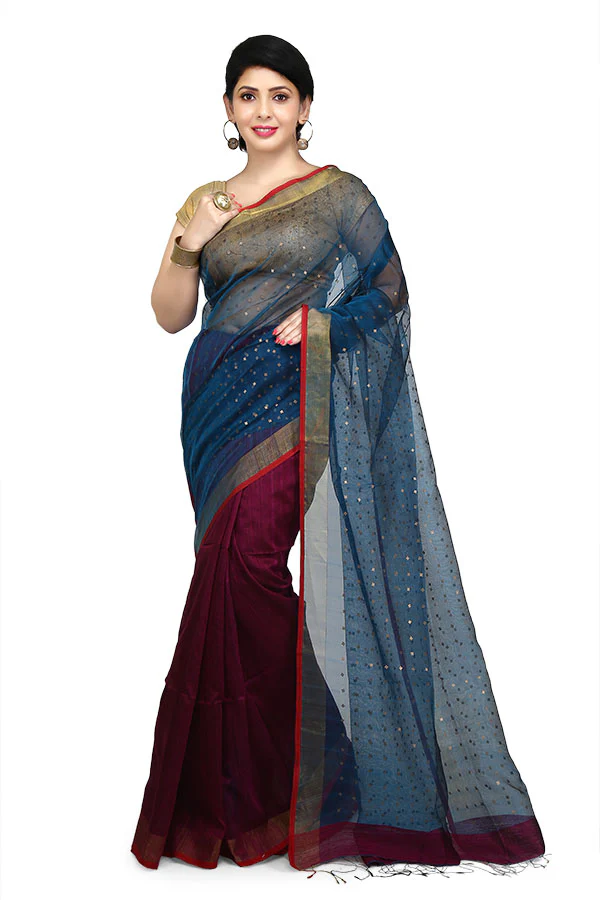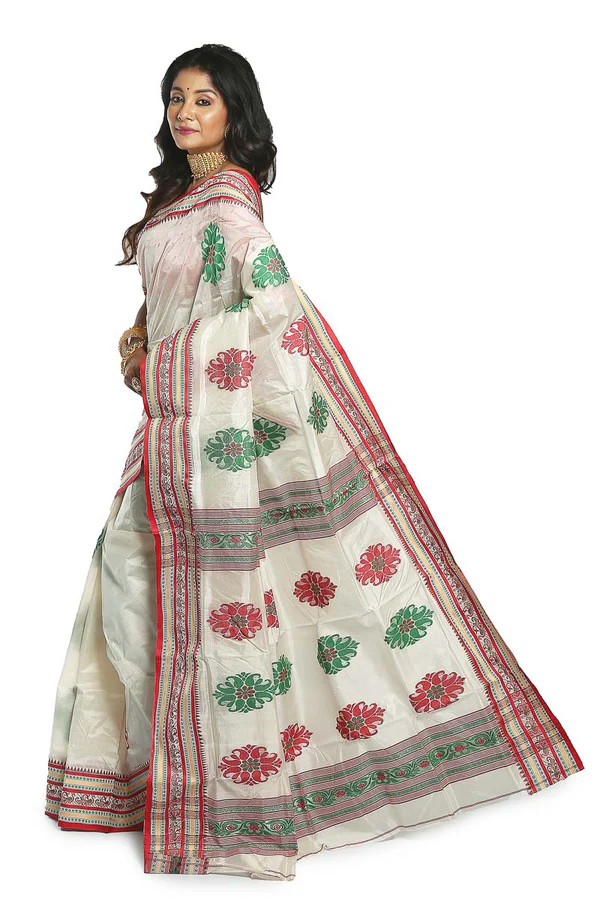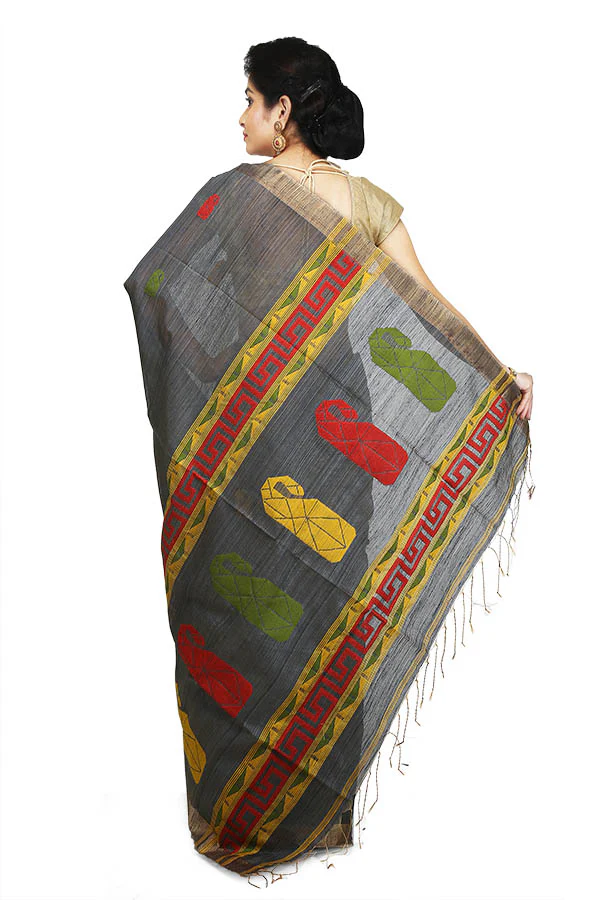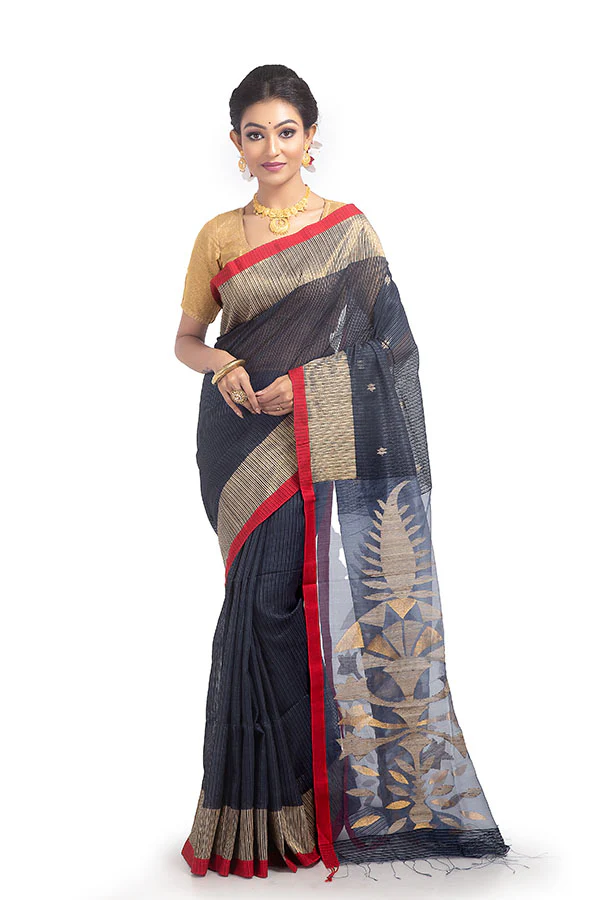Notifications
4 minutes, 23 seconds
-109 Views 0 Comments 0 Likes 0 Reviews

The Bengali Tant Saree is more than just a piece of clothing; it’s a beautiful reflection of Bengal’s rich culture, history, and craftsmanship. Popularized by Banglar Saree, these sarees continue to hold a special place in every Bengali woman’s wardrobe. Their lightweight texture and vibrant designs make them perfect for daily wear as well as festive occasions.
History and Origin of Bengali Tant Saree
Historical Significance
The history of Bengali Tant Saree dates back to the Mughal era when fine muslin and cotton fabrics were highly admired. Initially woven in Dhaka and Tangail (now in Bangladesh), the art of Tant weaving gradually spread to West Bengal, especially in districts like Nadia, Hooghly, and Murshidabad.

The Origin of Tant Saree in Bengal
The term "Tant" comes from the Bengali word "Tat," meaning handloom. Skilled weavers, known as "Tantis," create these sarees using age-old techniques. Passed down through generations, this weaving tradition became an essential part of Bengali heritage.

Traditional Weaving Techniques of Tant Saree
Crafting a Tant Saree is a labor-intensive process. It begins with dyeing the cotton threads, followed by setting them on a loom. Artisans then weave intricate designs, inspired by nature, flowers, and mythological motifs. The borders and pallus are often more detailed, adding to the saree’s overall charm.
Types and Varieties of Bengali Tant Sarees
Tant Sarees come in different types based on their region and design patterns:
Every region adds its unique touch, offering a wide variety to choose from.
Fabric and Weaving of Tant Saree
Made entirely from cotton, Tant Sarees are perfect for Bengal's humid weather. The cotton fabric keeps the wearer comfortable throughout the day. Being handwoven ensures precision in the designs and gives each saree a unique texture.

Fashion and Styling Tips
To style a Tant Saree traditionally, pair it with gold jewelry, a bindi, and traditional sandals. Modern fashion enthusiasts experiment by wearing them with designer blouses, chunky jewelry, or even layering them over western outfits for a fusion look.
Cultural Significance of Bengali Tant Saree
Tant Sarees are often worn during Durga Puja, weddings, and cultural programs. In Bengali weddings, brides prefer Tant Sarees for pre-wedding rituals due to their light weight and traditional charm.

FAQs About Bengali Tant Saree
Q1. What is the specialty of Bengali Tant Saree?
A: Its lightweight, breathable cotton fabric and handwoven intricate designs make it special.
Q2. Where are authentic Tant Sarees made?
A: Authentic Tant Sarees come from Fulia, Shantipur, Dhaniakhali, and Begampur regions in West Bengal.
Q3. How to identify an original Tant Saree?
A: Genuine Tant Sarees are handwoven, have slight imperfections, and are made of pure cotton with a crisp feel.
Q4. Are Tant Sarees suitable for daily wear?
A: Yes, their soft cotton texture makes them ideal for daily use, especially in summer.
Q5. How to care for Tant Sarees?
A: Hand wash with mild detergent, avoid direct sunlight, and store wrapped in a cotton cloth.

